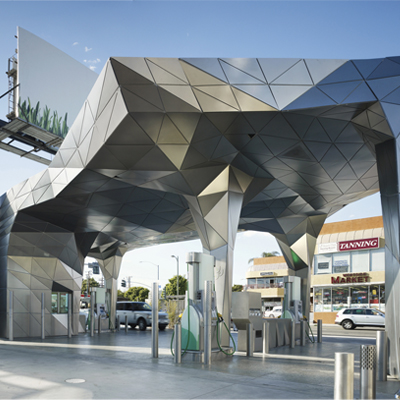Many of us have grown so accustomed to the sight of enormous architecture, that we often forget the impact these huge buildings have on the environment as they guzzle energy daily. In America, buildings consume a significant amount of natural resources and therefore contribute to approximately 73% of overall electricity consumption and 38% of CO2 emissions. The effort to make buildings more energy-efficient is essential in reducing negative environmental impact.
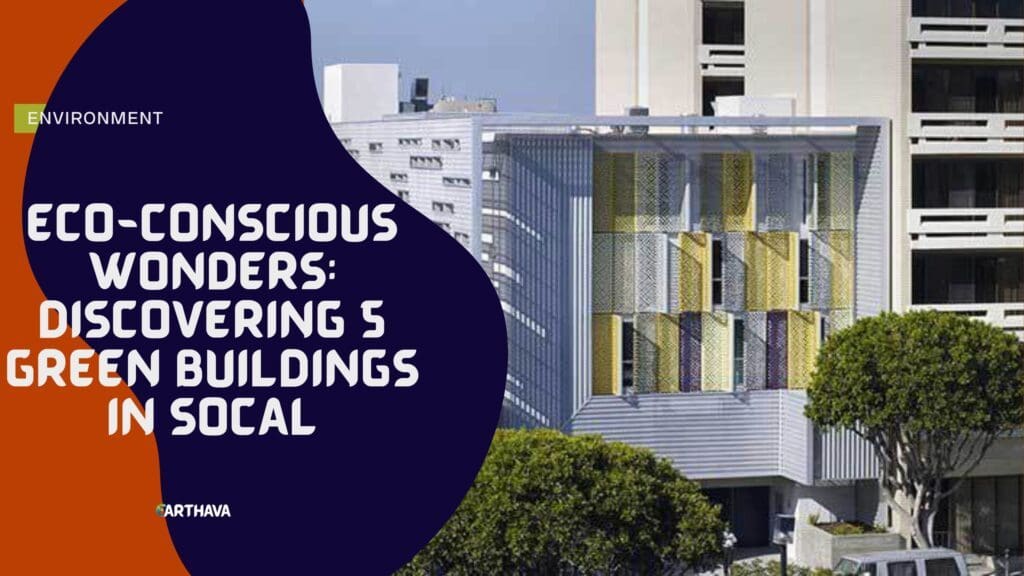
In Southern California and various other locations, LEED standards have introduced a way to award the world’s greenest buildings with a distinguishing notation, based on a straightforward checklist of energy-efficient and environmentally friendly criteria. Through LEED, buildings receive points in various categories, from water efficiency to energy use, and indoor environmental quality. Let’s take a look at some of the buildings within Southern California that have achieved a LEED standard rating, as well as other notable buildings, commendable for their environmental efforts.
Step Up on 5th – Santa Monica, California
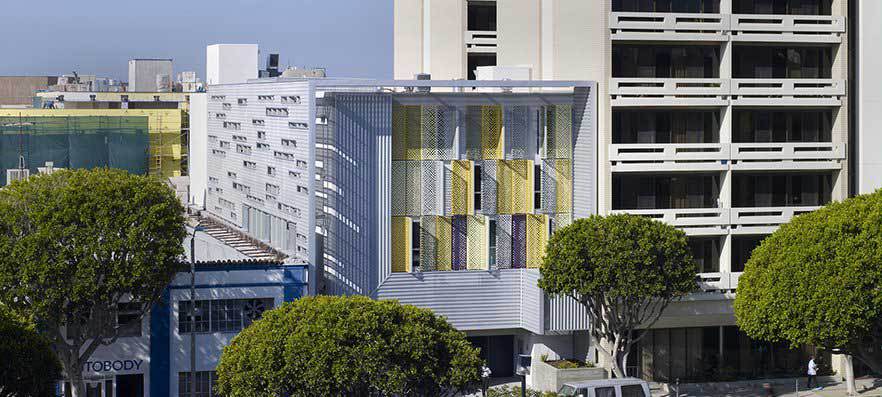
Located in downtown Santa Monica, Step Up on 5th earned the AIA Honor Award in 2010. The location offers home, support, and rehabilitation services to those living with mental illness. Consisting of 46 studio apartments, the project distinguished itself from most conventional projects for affordable, permanent housing, by incorporating energy-efficient measures exceeding standard practice. The careful construction of Step Up on 5th ensured reduced energy usage during construction and for future occupancy, as well as optimizing building performance.
Much of the design for this building came from a careful consideration of passive solar-energy measures. For example, the strategies include:
- Orienting the building to control solar cooling
- Shaping the materials to induce natural ventilation
- Designing windows for maximized lighting
- Shading south-facing windows
- Planning the interior to enhance the use of natural daylight
The passive strategies made the building 50% more efficient than conventionally designed structures.
The Robert Redford NRDC Building – Santa Monica, California.
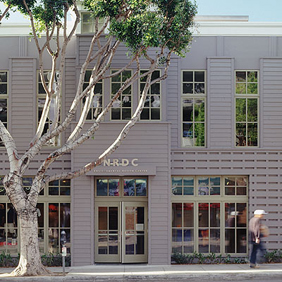
It only makes sense that the headquarters for the Natural Resources Defense Council (NRDC) should use cutting-edge technologies in green building design. While the offices of the NRDC have consistently used high-quality environmental design nationwide, the Robert Redford Building represents one of their most ambitious efforts to date. In fact, the building received the highest possible LEED rating – Platinum and is one of the greenest buildings in the world.
Located within the urban setting of Santa Monica, the 15,000-foot storefront accommodates an Environmental Action Center, meeting rooms, and offices. Internal light wells and large operable windows deliver the majority of the building’s light, while photovoltaic panels produce about 20% of its energy – making the NRDC headquarters the greenest building in the nation.
Additional energy-saving features include Energy-Star-rated roof coating and automatic interior lighting controls. Waterless urinals, low-water fixtures, and subsurface irrigation achieve water efficiency. What’s more, the building materials include a host of renewable materials, such as partitions made out of recycled water bottles, and carpets constructed out of recycled nylon. Over 90% of the materials in the building are recyclable or recycled.
Helios House Gas Station – Los Angeles, California.
The Helios gas station in Los Angeles, California, tackles the paradox of an environmentally friendly location to obtain gas. Though the brand “BP”, admits that the Helios House is only “a little better”, it comes from a project to upgrade the original station through environmentally conscious measures, including the use of recycled materials, and the installation of new, sustainable materials. The entire station uses recycled steel, glass, and scrap metal.
The gas station uses 90 solar panels to generate electricity and reduce its carbon footprint by an estimated 5,000 pounds of carbon dioxide a year. Additionally, the “green” restroom has a vegetated roof, recycled ceramic tiles, and concrete paving that reflects sunlight for natural cooling. The LED lights use less energy, and motion sensors operate those lights, while exceptional systems work on the collection, filtration, and distribution of water.
Despite the problems that gas stations continue to contribute to the environment, it’s worth appreciating the effort that went into making Helios House the first LEED-certified gas station in America.
PacMutual Campus – Downtown Los Angeles, California.
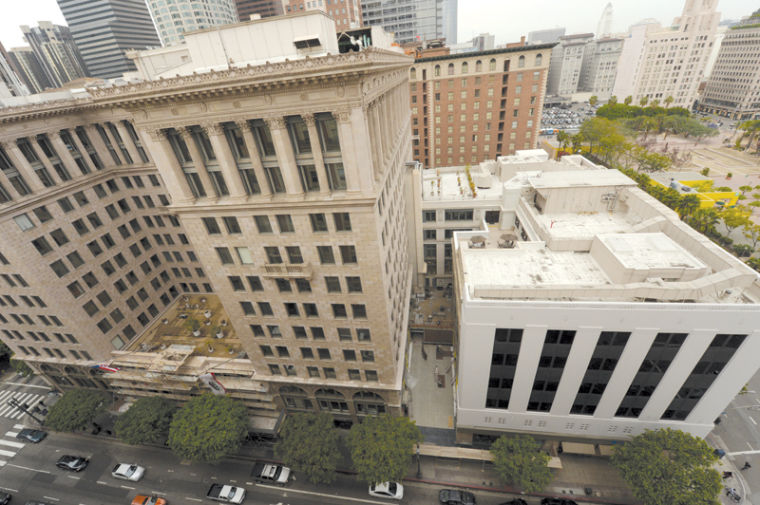
Situated in downtown Los Angeles, the PacMutual campus revitalized the historic architectural details of its three buildings to maintain their ornate appearance, while using high-quality sustainable features to achieve a LEED Platinum campus. Of course, the PacMutual campus isn’t just any environmentally friendly educational institution, it’s actually the oldest structure in Southern California to receive such a high rating. Though the building team had originally aimed for LEED Gold certification after recognizing how much energy their buildings were wasting, they found that they could achieve much more once work began.
In 2012, Rising Realty Partners bought the campus and began a $25 million renovation, during which they realized the true sustainable and architectural value of the structures. Only the sixth building in Los Angeles to receive the LEED E-B Platinum rating, PacMutual earned 81 points out of the 81 they attempted and ranked within the 91% percentile for energy efficiency when compared to similar buildings. Today, the campus offsets all of the energy it uses with renewable energy credits, and indoor water use is 32% lower than the national baseline.
Cherokee Studios – Los Angeles, California.
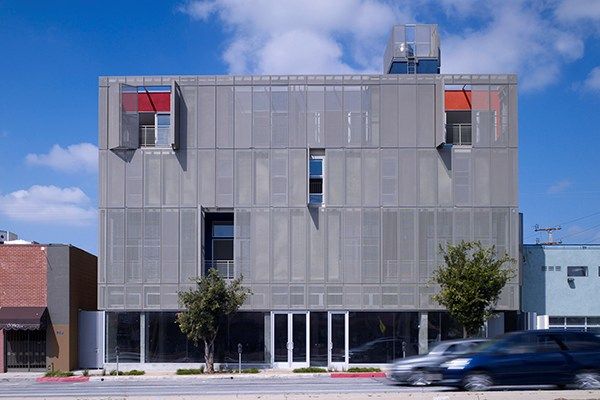
Finally, the Cherokee Studios office and apartment complex, on top of the old site for the Cherokee recording studios – known for hosting superstars like Warren Zevon and David Bowie, plays a huge role in the environment in Southern California. Today, the Cherokee Studios are starred in their own right, as one of the greenest buildings in the United States. The mixed-use housing project used green design as much as possible – attempting to market the realistic nature of a green lifestyle.
The design maximizes the opportunities afforded by the Southern California climate through a passive cooling strategy that adapts thermal convection and cross-ventilation while reducing the ecological footprint of the building overall. What’s more, the perforated panels on the outside of the building offer shade to cool the building, reduce noise, and enhance privacy while allowing for natural ventilation and light. Cherokee Studios is awaiting LEED Platinum certification.
Going Green in Southern California
The above list addresses just some of the greenest, and most environmentally-friendly buildings found across Southern California. As the emphasis on the importance of sustainability and renewable energy continues to grow, the chances are that new and old buildings alike will upgrade their efforts to become green and earn LEED certifications.
What are your favorite green buildings in Southern California? Let us know in the comments below!

